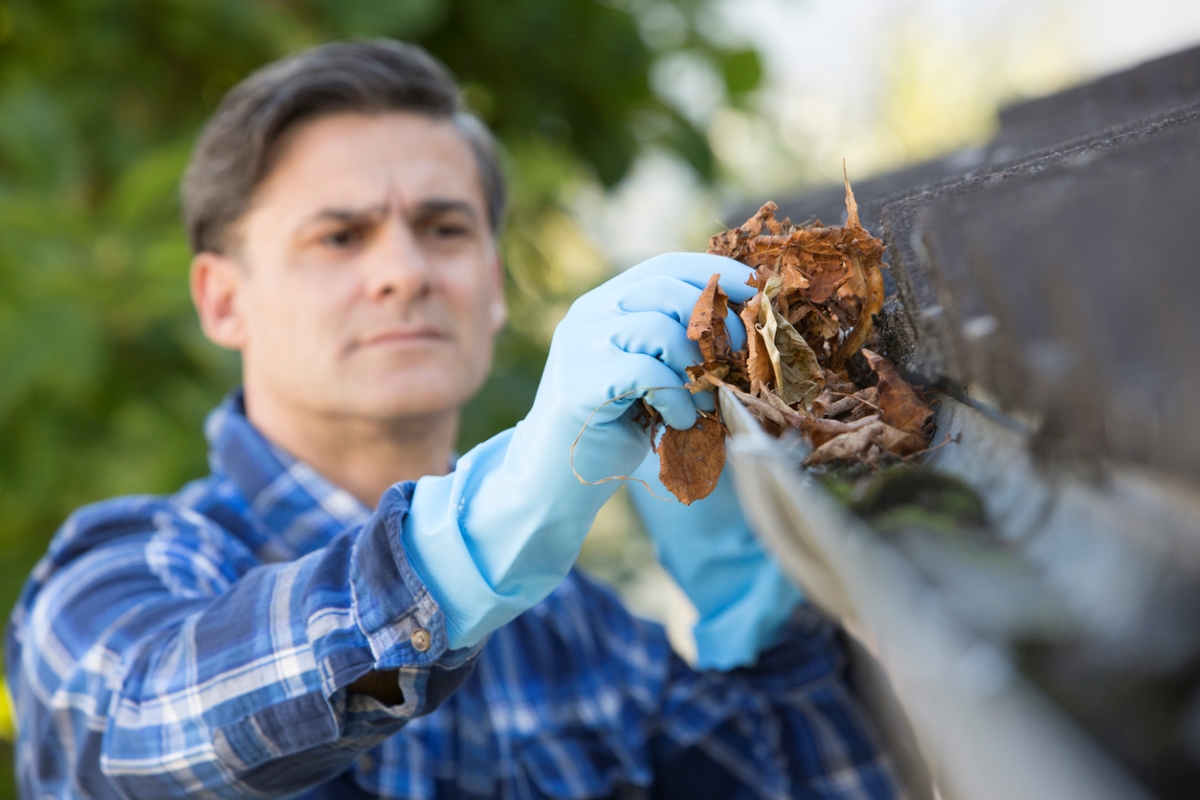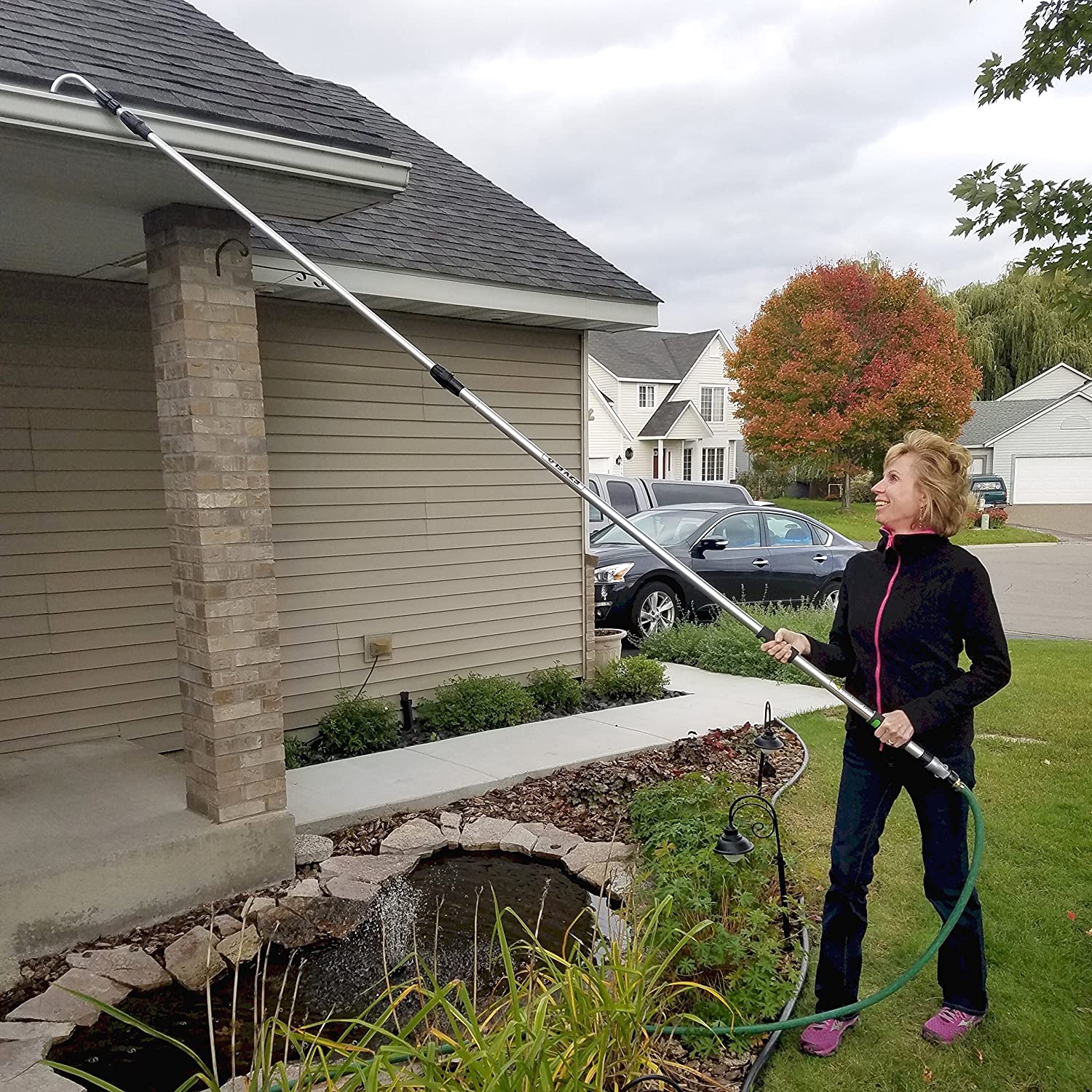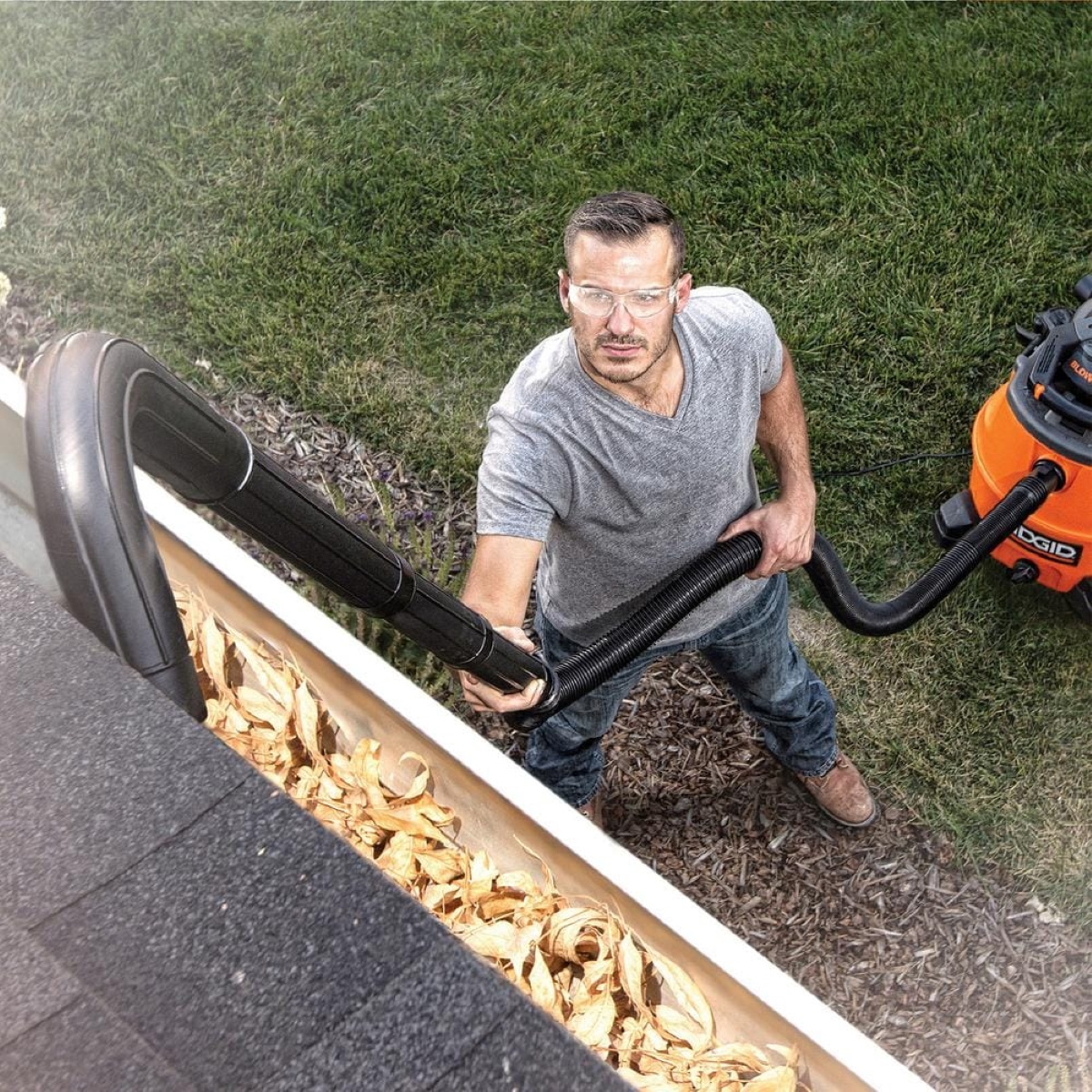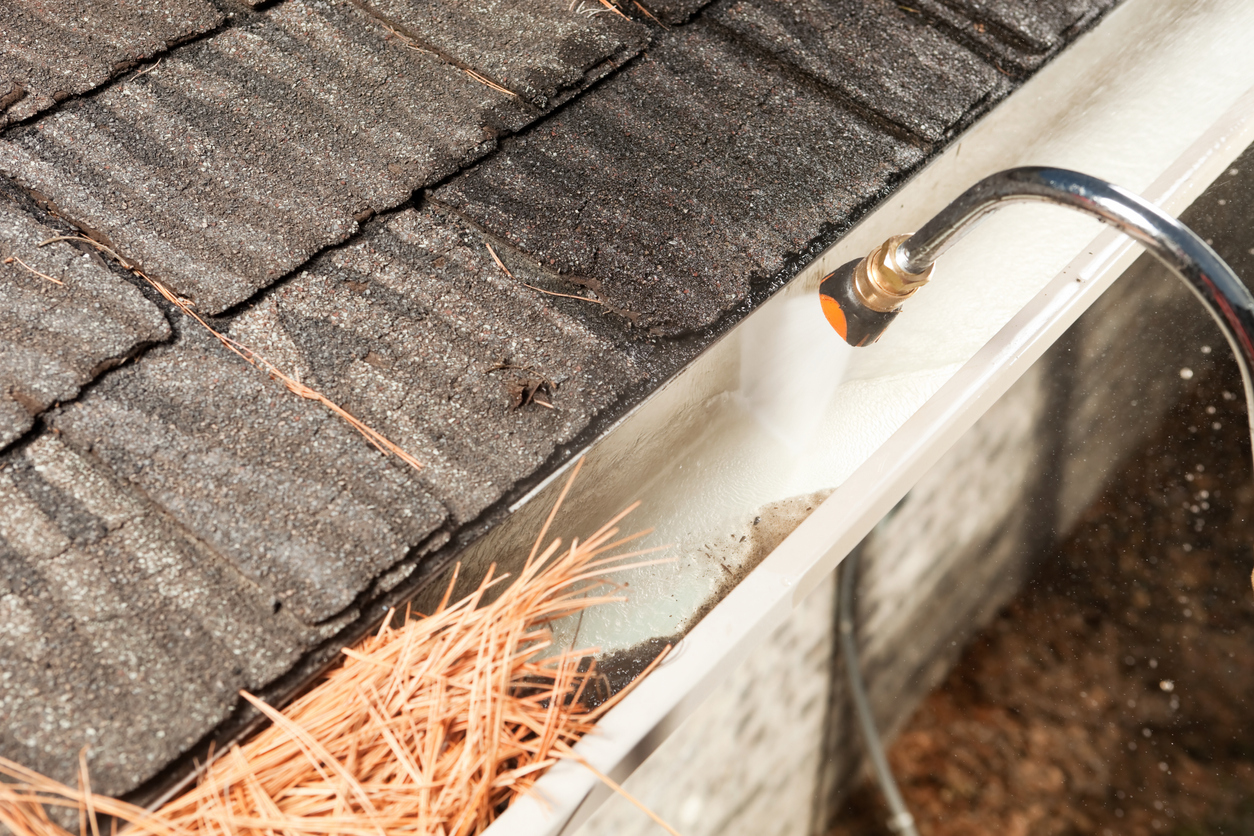

We may earn revenue from the products available on this page and participate in affiliate programs. Learn More ›
Of all the necessary evils that make up a diligent fall maintenance routine, cleaning the gutters may be the most dreaded task of all. Tedious though it is, homeowners are wise not to neglect this task, since properly functioning gutters help ensure that stormwater does not find its way indoors.
Learning how to clean gutters doesn’t have to be difficult or unsafe. Our roundup of the best methods features a variety of ways to get those leaves out of the gutters before they clog and lead to gutter damage. The best way to clean gutters is by using a method you’re comfortable with: one that’s both safe and effective.
Why is it important to clean rain gutters?
Gutters serve the vital purpose of collecting the rain that falls on the roof and diverting it through downspouts away from the home’s foundation. Without gutters, water that falls near the foundation can lead to leaks around windows or in a basement or crawl space.
Gutters typically require very little maintenance to keep them functioning well, but when a gutter is filled with leaves, it can clog the downspouts, causing water to run over the top of the gutter channel and fall to the ground below. Worse, winter’s freeze-thaw cycles can cause snow on the roof to melt and then freeze in the gutter, creating heavy ice blockages that can tear a gutter away from the roof.
Gutter Cleaning Safety
Teetering on a tall ladder while trying to dig leaves out of a gutter isn’t the safest way to clean gutters. Several gutter-cleaning tools are available that allow homeowners to clean away the debris while remaining safely on the ground.
If you have to climb a ladder to clean the gutters, don’t use a step ladder, which is prone to tipping if you get off balance. Instead, use a sturdy extension ladder and have a helper stand at the base to stabilize the ladder.
For all homes over a single story in height, hire a gutter-cleaning company to come out and clear the gutters. These companies have the equipment to reach high gutters safely. Don’t attempt walking on the roof to clean gutters—it’s a recipe for disaster.
How to Clean Gutters From the Ground
This may take a little more time than cleaning gutters from a ladder since you can’t see what you’re doing, so you need to proceed systematically and slowly. However, cleaning gutters while standing on the ground works well and is by far the safest gutter cleaning method. The two primary methods for cleaning gutters from the ground require either a garden hose or a shop-type wet/dry vacuum, plus a couple of handy attachments.
1. With a Garden Hose

As long as your gutters are not thoroughly clogged, you can clean them successfully with a garden hose. For the best results, it’s important that the hose be equipped with the proper attachment (a rigid tube with a curved end). By using an extension, such as the GutterMaster Telescopic Water Fed Pole, you can stand on the ground, not on a ladder, as you work. Start at the end nearest the downspout, spray out the entire channel length, and then work your way back to the downspout. Expect some mess—water, leaves, and small twigs are likely to spray over the sides of the gutter, so dress appropriately.
2. With a Wet/Dry Vacuum

As a substitute method for removing debris from your gutters, experiment with a wet/dry vacuum. You can buy special hoses and curved attachments that are designed to reach the obstructed gutters from the ground, such as the Vacmaster 2.5-Inch Gutter Cleaning Kit. Once you’ve removed the bulk of the debris, flush the gutters and downspout with water from a garden hose.
Using a Ladder to Clean Gutters
Climbing on a ladder to clean the gutters isn’t as safe as cleaning them from the ground because there’s always a risk of falling. To reduce the risk, it’s essential to use the right ladder. Avoid using a step ladder, which can tip. Instead, use a sturdy telescoping ladder that has been fitted with stabilizer arms. These arms can be purchased separately and attached to standard extension ladders. One such example is the Louisville Ladder Stabilizer, which braces the ladder against the siding and keeps it from slipping to the side. In addition, it’s a good idea to have an assistant on the ground who can hold the ladder to stabilize it, and hand you tools as you need them.
1. With a Leaf Blower
Many leaf blowers come with a nozzle attachment designed to release a powerful air stream, which is perfect for blasting leaves and twigs out of the gutter. Position your ladder so that you can work from one end of the channel to the other, blowing out obstructions as you go. Block the downspout first with a rag or old towel to keep from blowing leaves into it. As a final step, flush out any lingering leaves or twigs with a hose.
2. With a Power Washer

Has it been a long while since you last cleaned your gutters? A layer of dirt and debris may have built up over time. Blast it away with the fine-spray nozzle of your power washer. (This type of cleaning can get messy; be prepared to rinse the roof and exterior walls afterward.) For clogged gutters and downspouts, in particular, there’s no better tool than a pressure washer. Simply point the nozzle down the hole and rinse the shaft until the water can run freely through it.
3. By Hand

To clean gutters by hand, you’ll need a ladder, bucket, gutter scoop (or garden trowel), and heavy-duty work gloves. Little by little, take out the leaves and debris, placing what you remove into the bucket. Finally, flush the gutters and downspout with water until you are certain both are functioning correctly.
Pro Tip: If your downspouts are clogged and you don’t have a power washer, try busting through the obstruction with a small plumber’s snake, then rinse with a hose.
How to Prevent Clogged Gutters
An ounce of gutter-clogging prevention saves a lot of time and goes a long way toward keeping gutters clean and free from debris. To reduce the undesirable task of gutter cleaning—or prevent it altogether—consider installing a screen, such as the Raptor Stainless Steel Micro-Mesh Gutter Guard. It allows water to drain through the screen while blocking leaves and twigs.
Other types of gutter guards, such as the LeafGuard gutter system, direct running water into the gutter but harmlessly toss leaves and debris over the edge. This type of system requires professional installation and is extruded on-site to fit the length of the roof edge so there are no splices in the guttering, which can lead to leaking and dripping. If you are experiencing leaky gutters, repair them with a gutter sealant.
FAQs
Once per year is usually sufficient, and the best time is after leaves fall in autumn. This is when gutters are full of leaves that should be removed before winter.
The best gutter cleaner depends on the amount of leaves that accumulate and how easy it is to access the gutter. If you’re cleaning from a ladder, a scoop is handy. If you prefer to clean the gutter while remaining firmly on the ground, a telescoping wand is a better choice.
It isn’t safe. While some professional gutter cleaners may walk on the roof, the average homeowner shouldn’t try it. Use some of the methods listed above for safer gutter cleaning.
